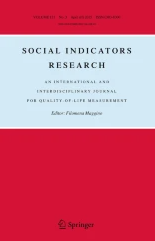
Shen Yang
Social Indicators Research
Abstract: Given the multiplicity and fluidity of identities, measuring mixed identities is challenging. As an epicenter of identity conflicts, Hong Kong is an ideal place to study mixed identities. However, the conventional unidimensional measurement in Hong Kong surveys and statistical correlation analysis may not accurately estimate the prevalence of different combinations of identities. Therefore, this study reassesses the patterns of identity combinations from 2016 to 2022 through K-means clustering of multiple identity indicators. The clustering analysis identifies three clusters, namely dual identity, moderate hybrid identity, and predominant Hong Kong identity. The analysis suggests that the conventional single-item indicator underestimates the proportion of mixed identities in the population. Furthermore, this study documents the rise of a predominant Hong Kong identity, particularly among young people. The regression analyses illustrate that citizens who are older, non-supporters of the pan-democratic camp, and not born in Hong Kong are more likely to have dual identity. This study contributes to the literature on measuring mixed identities by arguing that multidimensional measurement is preferable to unidimensional measurement when the main research objective is to examine the proportion of various combinations of identities.
About the author: Shen Yang was a HYI Chinese Politics Training Program Visiting Fellow from 2018-19.
